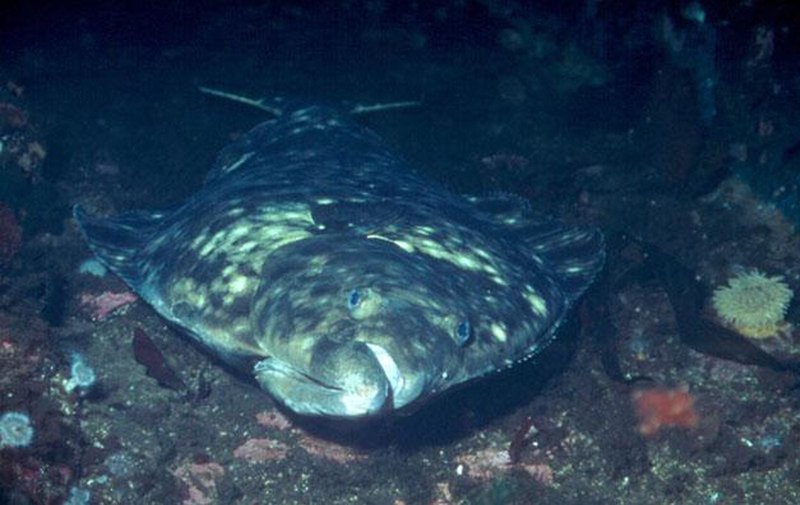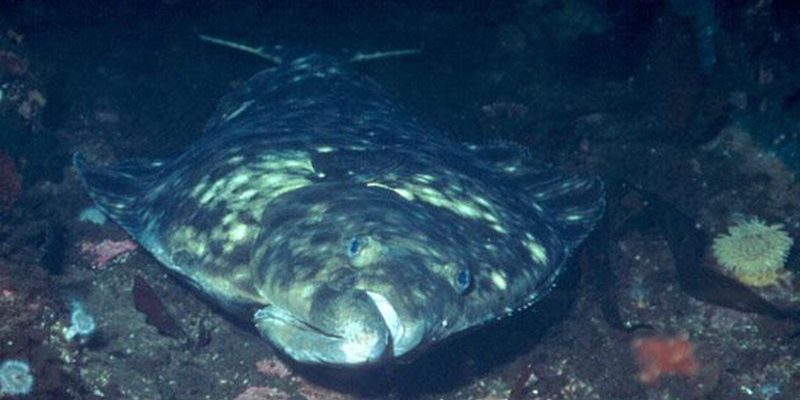
These flatfish, found mostly in the North Atlantic and North Pacific Oceans, are not just fascinating creatures; they are vital to the ecosystems they inhabit. From their role as predators to their interactions with other marine species, understanding the halibut’s impact helps us appreciate the delicate dance of life beneath the ocean’s surface. Now, let’s dive into the specifics of how these fish contribute to marine ecosystems.
What Makes Halibut Unique?
Halibut are often referred to as “flatfish” due to their unique, flattened bodies. They can grow quite large, with some reaching weights of over 400 pounds! Their shape isn’t just for show; it allows them to blend in with the sea floor, making them excellent ambush predators. If you’ve ever seen a halibut in action, you might liken it to a stealthy ninja waiting for the perfect moment to strike.
Their coloration, typically a brown or mottled pattern on the top side, helps them camouflage against sandy and rocky substrates. This natural disguise is crucial for both hunting and avoiding predators. Speaking of hunting, halibuts primarily feast on fish like cod and flatfish, as well as various crustaceans. This diet puts them at the center of the food web, which leads us to their role in maintaining balance in marine ecosystems.
Halibut as Predators
As apex predators, halibuts play a pivotal role in controlling the populations of their prey. Here’s the thing: if halibuts weren’t around to keep certain fish numbers in check, we could see an overpopulation of these species. Over time, this could lead to a significant imbalance in the ecosystem. Think of it like a garden; if certain plants grow unchecked, they can choke out others, leading to a decline in biodiversity.
Additionally, halibuts help maintain the health of the seafloor community. By preying on fish and invertebrates, they ensure that the marine food web functions smoothly. This predation can also prevent competition for resources among smaller fish species. Essentially, halibuts are like nature’s built-in regulators—they keep everything in harmony.
The Role of Halibut in the Food Web
Halibuts don’t just influence the species they eat; they also serve as prey for larger predators. Sharks, sea lions, and human fishers all target halibuts, making them a key link in the marine food web. This relationship is crucial. When halibut populations fluctuate due to overfishing or environmental changes, it creates a ripple effect throughout the ecosystem.
Imagine a domino effect: if halibuts become scarce, the species that typically prey on them may also decline due to lack of food. This can lead to overpopulation of the smaller fish halibuts usually consume, which in turn can affect sea grass and coral health. By understanding this interconnectedness, we can see why protecting halibut populations is essential for overall marine health.
Halibut and Their Habitats
Halibuts thrive in diverse marine environments, from the cold waters of the North Atlantic to deeper parts of the Pacific. They prefer sandy or muddy sea floors where they can easily camouflage. Their habitats play a significant role in their life cycle, affecting growth rates and spawning behaviors.
During spawning season, halibuts migrate to shallower waters. This behavior attracts both their natural predators and fishing enthusiasts. Here’s a fun fact: halibuts can spawn multiple times a season, allowing them to help sustain their populations even under fishing pressure. Unfortunately, habitat degradation from pollution and climate change can threaten these spawning grounds, highlighting the need for conservation efforts.
Conservation Status and Challenges
Despite their importance, halibut populations face several threats. Overfishing is one of the most pressing issues. Commercial fishing practices can sometimes lead to unsustainable catches, reducing their populations to dangerously low levels. This makes it crucial to implement effective fisheries management strategies to ensure that halibut stocks remain sustainable.
Pollution also presents challenges. Chemicals, plastics, and excess nutrients can disrupt the delicate ecosystems that halibuts call home. For example, the accumulation of plastic waste in the ocean doesn’t just impact halibuts directly; it affects their prey and habitats, leading to broader ecological consequences. Conservation efforts focused on reducing pollution and enforcing sustainable fishing practices can make a significant difference.
The Economic Importance of Halibut
Halibuts aren’t just vital for marine ecosystems; they also hold economic significance for many coastal communities. Fishing for halibut is a major industry that provides jobs and supports local economies. Many people rely on halibut fishing both for income and food. However, this economic reliance underscores the importance of sustainable practices.
When the halibut populations are healthy, the fishing industry thrives. It’s a win-win situation. Consumers get access to a popular and delicious fish, while communities maintain their livelihoods. When we prioritize conservation, we’re also investing in the economic future of these regions, creating a balanced approach to marine resource management.
Understanding the role of halibut in marine ecosystems is crucial for both ecological balance and human economies. These fish are much more than just a catch of the day; they are essential players in maintaining the health of their environments. By protecting halibut populations and their habitats, we ensure the continued vitality of marine ecosystems.
Ultimately, it’s about more than just one species—it’s about preserving the intricate web of life that flourishes beneath the ocean waves. So, the next time you enjoy a halibut dish, remember the larger story at play and the important role these fish play in our world. Let’s work together to safeguard their future for generations to come.

